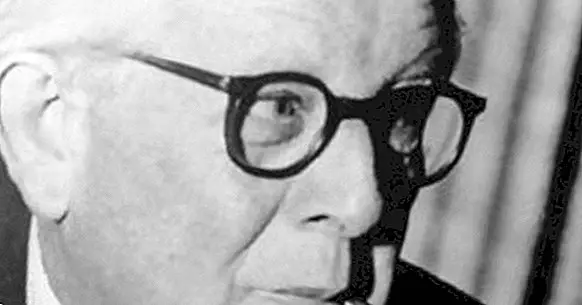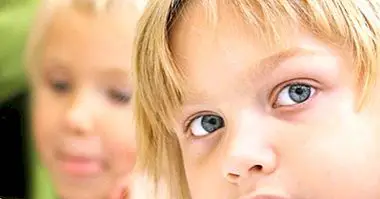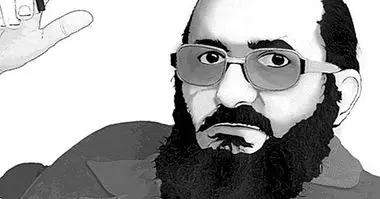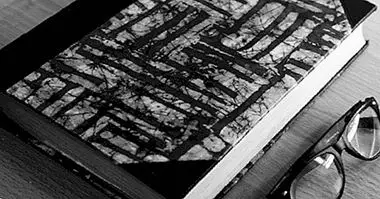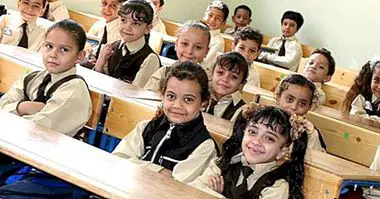The Theory of Learning by Jean Piaget
Jean Piaget (1896 - 1980) was a Swiss psychologist, biologist and epistemologist. He developed his thesis on the study of psychological development in childhood and the constructivist theory of the development of intelligence. That's where what we know as the Piaget's Theory of Learning .
The Piaget Theory of Learning
Jean Piaget is one of the most well-known psychologists of the constructivist approach, a current that draws directly from the theories of the learning of authors such as Lev Vygotsky or David Ausubel .
What is the constructivist approach?
The constructivist approach, in its pedagogical current, is a determined way of understanding and explaining the ways in which we learn. Psychologists who start from this approach emphasize the figure of the apprentice as the agent that ultimately is the engine of their own learning .
Parents, teachers and members of the community are, according to these authors, facilitators of the change that is taking place in the mentee's mind, but not the main piece. This is so because, for constructivists, people do not literally interpret what comes from the environment, either through their own nature or through the explanations of teachers and tutors. The constructivist theory of knowledge speaks to us of a perception of one's own experiences that is always subject to the interpretative frameworks of the "apprentice".
That is to say: we are unable to objectively analyze the experiences we live in each moment, because we will always interpret them in light of our previous knowledge. Learning is not the simple assimilation of information packages that come from outside, but is explained by a dynamic in which there is a fit between new information and our old structures of ideas. In this way, what we know is being built permanently .
Learning as reorganization
Why is it said that Piaget is constructivist? In general terms, because this author understands learning as a reorganization of the cognitive structures existing at each moment. That is to say: for him, the changes in our knowledge, those qualitative leaps that lead us to internalize new knowledge from our experience, are explained by a recombination that acts on the mental schemes that we have on hand as Piaget's Theory of Learning shows us.
Just as a building is not constructed by transforming a brick into a larger body, but rather it is built on a structure (or, what is the same, a certain placement of some pieces with others), learning, understood as a process of change that is being built, makes us go through different stages, not because our mind spontaneously changes its nature with the time, but because certain mental patterns vary in their relationships, they are organized differently as we grow and interact with the environment. It is the relationships established between our ideas, and not the content of these, that transform our mind; In turn, the relationships established between our ideas change the content of these.
Let's take an example. Perhaps, for an 11-year-old child, the idea of family equals his mental representation of his father and mother. However, there comes a point where his parents divorce and after a while he sees himself living with his mother and another person he does not know. The fact that the components (father and mother of the child) have altered their relationships calls into question the more abstract idea in which they are ascribed (family).
Over time, it is possible that this reorganization affects the content of the idea "family" and makes it an even more abstract concept than before in which the new couple of the mother could have a place. Thus, thanks to an experience (the separation of parents and the incorporation into the daily life of a new person) seen in the light of the ideas and available cognitive structures (the idea that the family are the biological parents in interaction with many other thinking schemes) the "apprentice" has seen how his level of knowledge in relation to personal relationships and the idea of family has given a qualitative leap .
The concept of 'scheme'
The concept of scheme is the term used by Piaget when referring to the type of cognitive organization existing between categories at a given time. It is something like the way in which some ideas are ordered and put in relation with others.
Jean Piaget argues that a scheme it is a concrete mental structure that can be transported and systematized.A scheme can be generated in many different degrees of abstraction. In the early stages of childhood, one of the first schemes is that of 'permanent object , which allows the child to refer to objects that are not within his perceptual scope at that time. Time later, the child reaches the scheme of 'object types' , through which is able to group the different objects based on different "classes", as well as understand the relationship these classes have with others.
The idea of "scheme" in Piaget is quite similar to the traditional idea of 'concept', with the exception that the Swiss refers to cognitive structures and mental operations, and not to classifications of perceptual order.
In addition to understanding learning as a process of constant organization of the schemes, Piaget believes that it is the result of adaptation . According to the Piaget Learning Theory, learning is a process that only makes sense in situations of change. Therefore, learning is partly knowing how to adapt to these new features. This psychologist explains the dynamics of adaptation through two processes that we will see next: assimilation and the accommodation .
Learning as an adaptation
One of the fundamental ideas for Piaget's Theory of Learning is the concept of human intelligence as a process of nature biological . The Swiss maintains that man is a living organism that presents itself to a physical environment already endowed with a biological and genetic inheritance that influences the processing of information coming from abroad. The biological structures determine what we are able to perceive or understand, but at the same time they are what make our learning possible.
With a marked influence of the ideas associated with Darwinism, Jean Piaget constructs, with his Theory of Learning, a model that would be strongly controversial. Thus, it describes the mind of human organisms as the result of two "stable functions": the organization , whose principles we have already seen, and the adaptation , which is the process of adjustment by which the knowledge of the individual and the information that comes from the environment adapt to each other. In turn, within the dynamics of adaptation operate two processes: assimilation and accommodation.
Assimilation
The assimilation it refers to the way in which an organism faces an external stimulus based on its present organization laws. According to this principle of adaptation in learning, stimuli, ideas or external objects are always assimilated by some preexisting mental scheme in the individual.
In other words, assimilation makes an experience be perceived in the light of a previously organized "mental structure". For example, a person with low self-esteem may attribute congratulations for their work to a way of expressing pity for them.
Accommodation
The accommodation , on the contrary, it involves a modification in the present organization in response to the demands of the environment. Where there are new stimuli that compromise too much the internal coherence of the scheme, there is accommodation. It is a process opposed to assimilation.
Balance
It is in this way that, through assimilation and accommodation, we are able to cognitively restructure our learnings during each stage of development. These two invariant mechanisms interact with each other in what is known as the process of balance . Balance can be understood as a process of regulation that governs the relationship between assimilation and accommodation.
The process of balancing
Although assimilation and accommodation are stable functions as long as they occur throughout the evolutionary process of the human being, the relationship between them does vary. In this way, the cognitive evolution and intellectual maintains a close link with the evolution of the relationship assimilation-accommodation.
Piaget describes the process of equilibration between assimilation and accommodation as resulting from three levels of increasing complexity:
- The balance is established based on the subject's schemes and the stimuli of the environment.
- The balance is established between the person's own schemes.
- The balance becomes a hierarchical integration of different schemes.
However, with the concept of balance a new question is added to the Piagetian Learning Theory: what happens when the temporal equilibrium of one of these three levels is altered? That is, when there is a contradiction between own and external schemes, or between schemes of their own.
As Piaget points out in his Theory of Learning, in this case there is a cognitive conflict , and this is when the previous cognitive equilibrium breaks down. The human being, who constantly pursues the attainment of a balance, tries to find answers, raising more and more questions and investigating on his own, until it reaches the point of knowledge that restores it .
Author's note:
- An article on the stages of development proposed by Jean Piaget is already available to complement this article on the Piaget's Theory of Learning .
Bibliographic references:
- Bringuier, J. C. (1977). Conversations with Piaget. Barcelona: Gedisa
- Vidal, F. (1994). Piaget before Piaget. Cambridge, MA: Harvard University Press.

